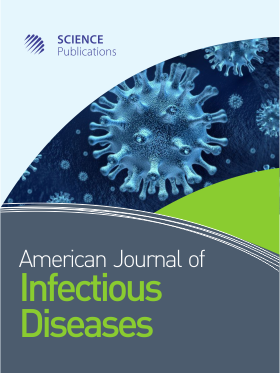Retroperitoneal Hydatid Cyst Masquerading as a Retroperitoneal Cystic Tumor
- 1 General Surgery, India
Abstract
Hydatid disease is an endemic disease, with canines the primary host and humans the intermediate host. Liver, spleen and lungs are most common involved organs, but it can involve any organ. Retroperitoneal hydatid cyst are categorised into two types, primary and secondary. Primary retroperitoneal hydatid cyst is rare disease, with most of the cases diagnosed intra-operatively, hence pre-operative high index of suspicion for any retroperitoneal cystic lesion to prevent inadvertent complication intra-operatively is of utmost important. 25-year male patient presented with right flank pain for 3 months, high grade fever for 10 days. On cross sectional imaging a retroperitoneal cystic lesion of size 7.1×7.6 cm was noted. Leucocytosis was present and rest of the blood parameters were with in normal limits. Patient was planned for surgery with a diagnosis of the retroperitoneal cystic tumour with possible tumour degeneration. On exploration 8×8 cm pelvic retroperitoneal hydatid with daughter cysts and purulent material noted. Diagnosis of infected retroperitoneal hydatid cyst was made and cyst de-roofing and drainage was done. Final diagnosis of hydatid cyst was confirmed by histopathology report. The retroperitoneal hydatid cyst is a rare entity even in endemic areas. First reported in 1958 by Lockhart and Sapinza, an isolated retroperitoneal hydatid cyst could be caused by haematogenous dissemination of protoscoleces after bypassing the liver (veno-venous shunts within the liver and in the space of Retzius) and the lungs or by the gastrointestinal tract into the lymphatic system. Dew and Waddle had favoured airborne transmission and direct implantation of the embryo in the bronchial mucosa as another possible mode of entry. This raises the possibility of an embryo of the parasite entering a venule after penetrating the bronchial mucosa and reaching the left side of the heart to involve other sites and thus bypassing the lung. Spontaneous, traumatic, or surgical rupture of a hepatic cyst may also give rise to cysts in retroperitoneum. The definitive diagnosis of a retroperitoneal hydatid cyst requires a combined assessment of clinical, radiological and serological analysis. Definitive treatment is total cystopericystectomy. Though retoperitoneal hydatid cyst are rare, diagnosis should be considered if any retroperitoneal cyst lesion is noted to prevent the complications of the cyst rupture. The gold standard treatment is total cystopericystectomy. If complete resection is not possible, cyst de-roofing, drainage and adjuvant anti-helminthic should be considered.
DOI: https://doi.org/10.3844/ajidsp.2019.80.86

- 5,706 Views
- 2,986 Downloads
- 0 Citations
Download
Keywords
- Retroperitoneum
- Hydatid Cyst
- Daughter Cysts
